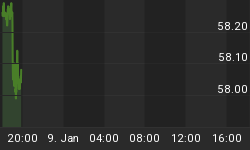
The purpose of this article is to explain how derivatives have distorted gold prices with particular reference to the US futures markets. This will enable us to anticipate the price effect when the distortion is eventually unwound.
When a derivative is created it diverts supply and demand from the underlying commodity. If it is then hedged into the underlying commodity the price effect is the same as if it was a simple commodity transaction. Enter the "honest speculator", who is neither producer nor consumer, but seeks to profit by trading derivatives for profit, without an intention of taking delivery. The speculator who does not roll his positions into subsequent future contracts brings forward demand or supply only to reverse the price effect later in the life of the contract. In this case speculators provide liquidity with no lasting price distortions.
So far we have considered markets which are essentially free. In the US futures markets, this changed when banks were permitted to act as "commercials", despite the fact they are in fact speculators in the original market definition. The nature of the futures market changed from this moment to one where speculative positions have become more or less permanent.
In the case of gold and silver the banks have absorbed physical demand by continually running net short positions. We cannot say that all of this demand would have existed without the banks' intervention; however there is no doubt that the expansion of the overall market by the addition of permanent short positions has led to lower prices overall than would otherwise be the case.
If futures markets are not to distort prices on a prolonged basis three conditions must apply: every player must be motivated only by profit, the banks must commit only their own resources and no one else's, and there must be periodic liquidation of speculative positions. Instead, there is little doubt that there is political intervention, the banks are too big to fail which allows them to commit funds they would not otherwise commit, and there has been no overall liquidation of speculative positions. The result is that banks have been able to manipulate prices, and pricing has become distorted, confirmed by emigration of gold away from derivative markets.
The third condition cited above needs further explanation. Since March speculative longs have been liquidated through stop-loss orders, leaving a core of longs inaccurately regarded as speculators. The banks have closed their short positions by encouraging new speculators to open short positions, so the speculators are all now on the short side. They don't realise it yet, but the speculator shorts are the now only true speculators in the market. Therefore when they come to close their positions, there is no one to provide them the necessary market liquidity except on a completely different and higher price basis.
The net effect on the gold price so far has been to suppress it. Demand for physical has increased at lower prices as one would expect, leading to a physical liquidity crisis on US futures markets. At the same time a parallel liquidity crisis has developed on the London Bullion Market, evidenced by negative gold forward rates.
















